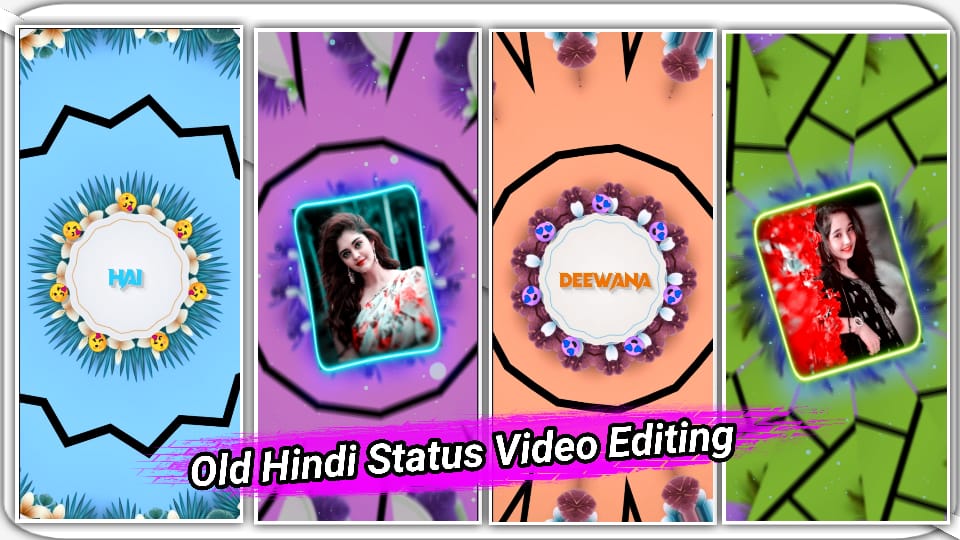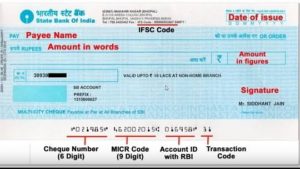Post Views: 295
What are Cryptocurrencies?
Before looking at some of these alternatives to Bitcoin, let’s go back and briefly explore what we mean by terms like cryptocurrency and altcoin. A cryptocurrency, widely defined, is a tangible or digital currency that takes the form of tokens or “coins.” While some cryptocurrencies have entered the virtual world through credit cards or other projects, the vast majority remain completely invisible.
The “crypto” of cryptocurrencies refers to complex encryption that allows the processing and processing of digital currencies and their transactions into distributed systems. In line with this important “crypto” feature of this investment is a common commitment to lowering power in positions; Cryptocurrencies are usually produced as code by teams that create extraction methods (usually, or otherwise, through a process called “mining”) and other controls.
Cryptocurrencies are almost always designed to be uncomfortable in public administration and administration, even though they are growing more and more popular this sector service is being undermined. The backbone of Bitcoin collectively is called altcoins, and in some cases “shitcoins,” and often tries to introduce it as a modified or advanced Bitcoin type. While some of these currencies may have some interesting features that Bitcoin does not have, comparing the level of security available on Bitcoin networks will still be seen by altcoin.
Below, we will explore some of the most important digital currencies besides Bitcoin. The first, however, is the caveat: it is unlikely that a list like this is completely complete. One reason for this is that there are more than 4,000 cryptocurrencies available since January 2021. While most cryptos have little tracking or trading volume, some enjoy great popularity among dedicated communities of supporters and investors.
Other than that, the field of cryptocurrencies is constantly evolving, and the next big digital token can be issued tomorrow. While Bitcoin is widely known as a pioneer in the world of cryptocurrencies, analysts use many methods to test tokens other than BTC. It is common, for example, that analysts say that the most important factor in determining the corresponding value of each currency is the market value. We have included this in our thinking, but there are other reasons why a digital token may not be registered, too.
The 11 most important cryptocurrencies outside of Bitcoin.
Bitcoin has not only become a trendsetter, which introduces a wave of cryptocurrencies built into the used peer network, but it has also become the standard for cryptocurrencies, encouraging a growing fan base and spinoffs.
- A cryptocurrency, defined in detail, is a currency that takes the form of tokens or “coins” and is found in a distributed and separate ledger.
- Besides, the field of cryptocurrencies has grown significantly since the launch of Bitcoin a decade ago, and the next big digital token could be issued tomorrow.
- Bitcoin continues to lead the cryptocurrency package in terms of market capabilities, user base, and popularity.
- Other tangible funds such as Ethereum are used to create low-cost financial systems for those who do not have access to traditional financial products.
- Some altcoins are allowed as they have new features than Bitcoin, such as being able to handle multiple transactions per second or use different compatibility techniques as proof of stake.
1. Ethereum (ETH)
One of the first Bitcoin platforms on our list, Ethereum, is a dynamic software platform that allows Smart contracts and used applications (DApps) to be created and run without downtime, fraud, control, or third-party interference. The goal behind Ethereum is to create a low-level set of financial products that anyone in the world can access for free, regardless of nationality, race, or religion. This feature makes the impact on foreigners even more stressful, as those without state infrastructure and government guidelines can gain access to bank accounts, loans, insurance, or various other financial products.
Applications on Ethereum are run on their own cryptographic token, ether. Ether is like a mobile car on the Ethereum platform and is sought after by most developers who want to develop and implement programs within Ethereum, or even now, by investors who want to buy some digital currencies using ether. Ether, launched in 2015, is currently the second-largest digital currency in the market price after Bitcoin, although it lags behind the most popular currencies by a large court. As of January 2021, the ether market head is about 19% of the size of Bitcoin.
In 2014, Ethereum introduced a pre-ether sale that received an impressive response; this has helped to determine the age of the initial coin allocation (ICO). According to Ethereum, it can be used to “integrate, downgrade, protect and trade in anything.” Following the DAO attacks in 2016, Ethereum was split into Ethereum (ETH) and Ethereum Classic (ETC). As of January 2021, Ethereum (ETH) had a market value of $ 138.3 billion and a token value of $ 1,218.59.
In 2021 Ethereum plans to change its compatibility algorithm from proven-function to stake verification. This step will allow the Ethereum network to run at much lower power and improved transaction speed. Stack proof allows network participants to “catch” their ether in a network. This process helps to protect the network and process transactions that take place. Those who do this are rewarded with an ether similar to the interest account. This is another way for Bitcoin to secure a job where miners are highly rewarded with Bitcoin for processing transactions.
2. Bitcoin (LTC)
Litecoin, launched in 2011, was one of the first currencies to follow in the footsteps of Bitcoin and has been called “silver in bitcoin gold”. Produced by Charlie Lee, an MIT graduate, and former Google engineer. Bitcoin is based on an open global payment network that can be controlled by any central administrator and uses “scripts” as proof of performance, which can be deployed with the help of grade-consumer CPUs. Although Litecoin is similar to Bitcoin in many ways,
it has a faster rate of production and therefore provides more time to secure faster transactions. In addition to developers, the number of retailers accepting Litecoin is increasing. As of January 2021, Litecoin had a total market value of $ 10.1 billion and a token value of $ 153.88, making it the sixth-largest cryptocurrency in the world.
3. Cardano (ADA)
Cardano is a cryptocurrency “Ouroboros Proof-of-Stake” developed by engineers, mathematicians, and cryptography experts in a research-based way. The project was co-founded by Charles Hopkinson, one of Ethereum’s original founding members.
After a disagreement with Ethereum’s director, he quit and later helped build Cardano. The team behind Cardano built their blockchain with several experiments and peer-reviewed research. Researchers after the project have written more than 90 papers on blockchain technology on many topics. This study is the core of Cardano. As a result of this robust process, Cardano stands out among his colleagues and other major cryptocurrencies. Cardano is also called “Ethereum Killer” because its blockchain is said to be very powerful.
That said, Cardano is still in his early stages. Although it has defeated Ethereum with a guaranteed consensus model, it is still a long way off regarding distributed funding applications. Cardano aims to have a global financial system, among other things, the establishment of high-quality financial products such as Ethereum, as well as chain partnerships, voter fraud, and legal compliance. As of January 2021, Cardano has a market capitalization of $ 9.8 billion and $ 0.31 billion in ADA trading.
4. Polkadot (dot)
Polkadot is a unique cryptocurrency designed to provide interaction between other blockchains. Its protocol is designed to connect permissions with unauthorized blockchains and oracle to allow the system to work together under one roof.
A key part of Polkadot with its transmission series that allows for the ability to communicate through individual networks. It also allows “parachines,” or parallel blockchains, to have their own native symbols of specific use cases.
Where this program differs from Ethereum in that instead of simply creating programs distributed in Polkadot, developers can build their own blockchain, while using existing security in the Polkadot series. With Ethereum, engineers can create new blockchains, but they need to create their own security systems that can leave new and smaller projects open to attack, where the blockchain is bigger, security is greater. In Polkadot this concept is known as shared security.
Polkadot was created by Gavin Wood, another member of the founders of the Ethereum project, who had different views on the future of the project. As of January 2021, Polkadot has invested $ 11.2 billion and DOT trading of $ 12.54 billion.
5. Bitcoin Cash (BCH)
Bitcoin Cash (BCH) holds an important place in the history of altcoins as it is one of the first and most successful forks of early bitcoin. In the world of cryptocurrency, the fork leads to discussions and debates between engineers and miners. Due to the allocation of digital funds, the code will need to be changed due to the general agreement on the issuance of a token or basic coin; How to do this process varies depending on the specific cryptocurrency.
When different parties fail to reach an agreement, digital currency is sometimes split, the original series remains faithful to its original code and the new series begins life as a new version of the original coin, its complement code, and changes.
Some of these divisions led to BCH starting its life in August 2017. The issue of BCH formation was related to the issue of decline; The bitcoin network has a block size limit: one megabyte (MB). BCH increases the size of the block from one MB to 8 MB, in the sense that larger blocks can hold more transactions within them, so the transaction speed will increase. It also makes various changes, including the removal of isolated witness agreements affecting the restricted area. As of January 2021, BCH had a market value of $ 8.9 billion and a token value of $ 513.45.
6. Stellar (XLM)
Steller is an open blockchain network designed to provide business solutions by connecting financial institutions for the purpose of large-scale transactions. Big transactions between banks and investment firms that usually take a few days, with many mediators and good money, can now be done quickly without a consultant and cost nothing to traders. it happens.
While Steller has established itself as an institutional blockchain business, it is still an open blockchain that can be used by anyone. The system allows transaction transactions between any currencies. Steller’s primary currency is Lumens (XLM). The network needs to hold Lumans to enable users to work across the network.
Steller was founded by Jade McLab, a founding member of Ripple Labs and an engineer of the Ripple protocol. He eventually quit his job with Ripple and founded the Steller Development Foundation. Stellar Lumens has a market capitalization of $ 6.1 billion and is valued at $ 0.27 from January 2021.
7. Chainlink
Chanelink is Oracle’s mid-range network that closes the gap between smart contracts, such as Ethereum and external data. The blockchain itself does not have the ability to connect to external applications in a reliable way. Low-level Chainlink oracle allows smart contractors to connect to external data so that contracts can be made based on the information that Ethereum cannot communicate with.
Chanlink’s blog profile uses a lot of cases for its program. Among the many translated use cases, some cities will have to monitor pollution or smuggle water. Sensors can be installed to monitor the level of corporate use, water table and local water. The chainlink oracle can track this data and feed it directly into a smart contract. Wise contracts can be used to pay fines, issue flood warnings in cities, or use excessive city water using company invoices.
Chanlink was developed by Sergei Nazarov in collaboration with Steve Ellis. As of January 2021, Chainlink has a market capitalization of $ 8.6 billion, and the link is valued at $ 21.53 billion.
8. Binance Coin (BNB)
Binance Coin is a utility cryptocurrency that serves as a payment method for currency associated with trading on Binance Exchange. Those who use tokens as an exchange payment method can sell at a discount. The Binance Coin blockchain is also a platform where the exchanges assigned to Binance operate. Binance Exchange was founded by Changpeng Zhao and the exchange is one of the most widely used exchanges in the world based on trading versions.
Binance Coin was originally an ERC-20 token that ran on the Ethereum blockchain. Finally it launched its own mainnet. The network uses an evidence-based consensus model. As of January 2021, BNB has a market capitalization of $ 6.8 billion with a single BNB worth $ 44.26.
9. Tether (USDT)
Tether was the first, and most popular, cryptocurrensets of so-called stablocks to put their value in the market in a currency or other external targeting platform to reduce instability. Because many digital currencies, even keys like bitcoin, have experienced many times of significant fluctuations, Tether and others are trying to ease stock price volatility to attract potential users who may not be alerted. The price of Tether is tied directly to the value of the US dollar. The system allows users to easily transfer US dollars from other cryptocurrencies in a timely manner to convert to regular currency.
Launched in 2014, Tether described itself as “a blockchain-enabled platform designed to facilitate the use of fiat currencies in a digital way.” Effectively, it allows cryptocurrency users to use blockchain networks and technologies related to traditional currency transactions, while minimizing the flexibility and complexity associated with digital currencies. In January 2021, Tether was the third largest cryptocurrency in market value, with a total market value of $ 24.4 billion and $ 1.00 in total tokens.
10. Monero (xmr)
Mono is a secure, confidential and accessible currency. This open source cryptocurrency was launched in April 2014 and soon aroused great interest among the cryptography community and enthusiasts. The development of this cryptocurrency is based entirely on donations and is driven by the community. Monero is introduced with a strong focus on energy reduction and power distribution, and enables complete privacy using a special technology known as “ring signature”
In this way, a group of cryptographic signatures emerges, including at least one participant, but as they all seem valid, the actual cannot be separated. Due to unusual security measures, Monero has made a name for himself – linked to criminal activity around the world. Although the first member of an anonymous criminal organization, the secret in Monroe is also helpful to opponents of oppressive regimes around the world. As of January 2021, Monroe had a market value of $ 2.8 billion and a total value of $ 158.37.
11. Dogcoin
In 2013 Dogcoin emerged as a joke. Created by Jackson Palmer and Billy Marcus to facilitate the development of altcoins by creating Doge Internet memes in cryptocurrency. Although born as a joke, it has actually created some usefulness, as its large offer and low price result in minimal social media content. It is a derivative of Luckcoin which is derived from Litcoin and uses a script algorithm. Dogcoin has a 1 minute block interval that makes it faster than other blockchains. There is no coin for giving away coins and thus money can grow indefinitely.





 Taxi Booking Chet
Taxi Booking Chet